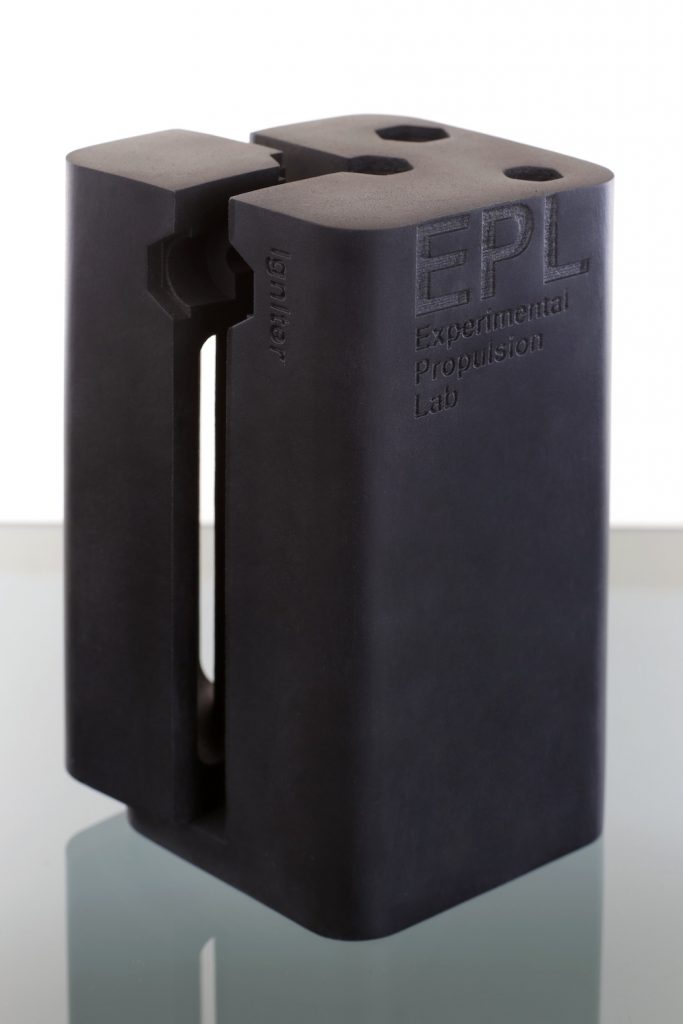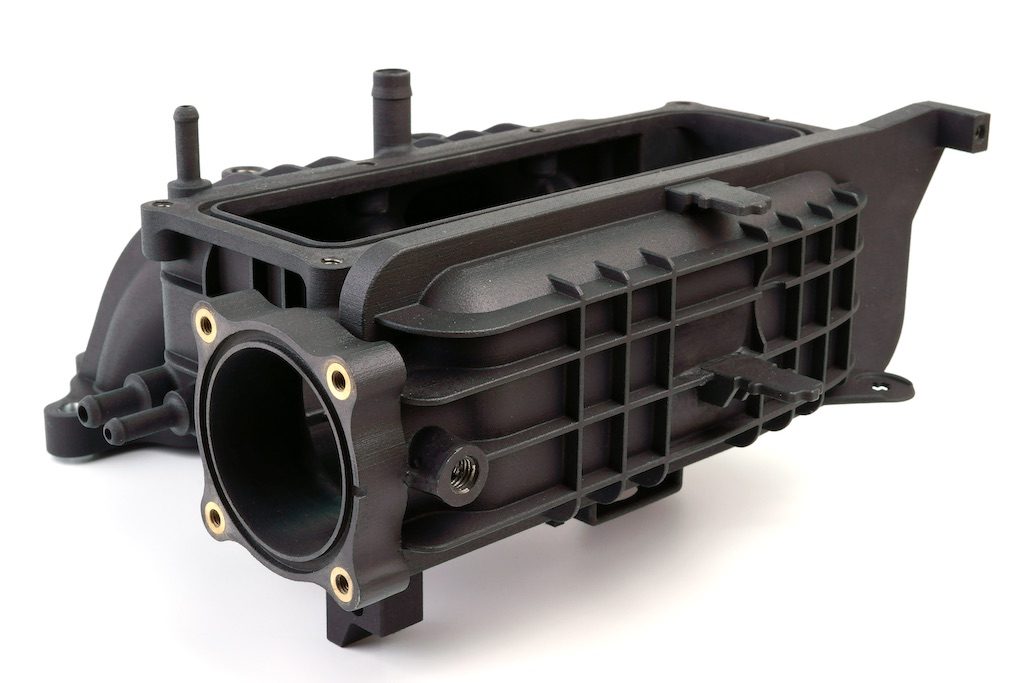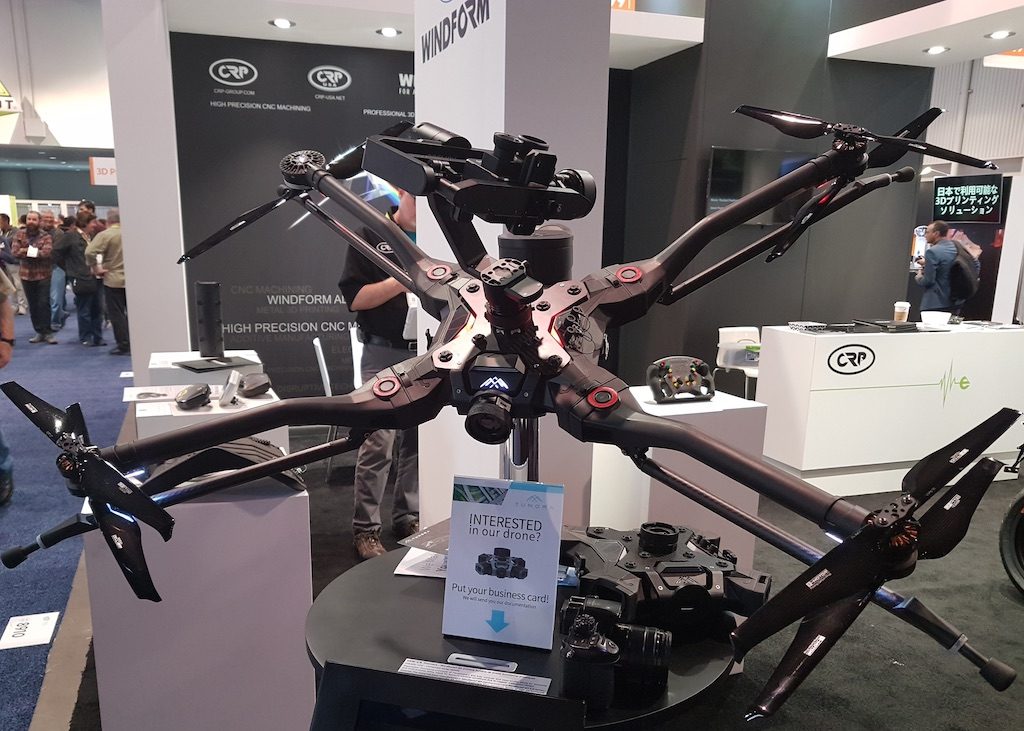Joyson Safety Systems, a leading provider of mobility safety components, systems and technology, recently developed its first functional 3D printed prototype of a Driver Air Bag (DAB) housing, using selective laser sintering (SLS) and Windform composite material from CRP Technology.
Joyson Safety Systems already has a history of pioneering innovation in mobility safety solutions, such as airbags, seatbelts, safety electronics and more, for automotive and non-automotive markets. Worth noting is the fact that it was the first manufacturer to supply leading OEMs in North America and Europe with steering wheels with Hands on Detection (HOD) for autonomous driving. In this instance, the company’s Core Innovations team looked to quickly develop prototypes for its airbag housing and turned to additive manufacturing to explore new processes and materials.
Traditionally, the airbag housing is produced using injection molding made up of a material that is polyamide with 40% glass fiber reinforcement, PA6-GF40. The DAB system, which needs to deploy in just 30-50 milliseconds to prevent injury to the driver, consists of the inflator, airbag cushion, cover and housing attached to the steering wheel. The performance of this system is essential, as a critical safety component of the vehicle that needs to have enough strength, impact resistance, and stability under heat and other diverse environmental conditions. Samer Ziadeh and Daniel Alt from the Core Innovations team explain the requirements for the DAB,
“It is to withstand a high amount of dynamic loads in addition to holding the inflator and the airbag cushion fixed in location during and after the deployment of the airbag system. This load is developed due to the pressure required to inflate the airbag, as a result the large stresses will directly be applied on the airbag system and more particularly on the DAB housing. The test procedures are normally conducted within a various range of temperatures between -35°C and 85°C.”
In looking for the right material for the DAB, the team found CRP Technology’s patented Windform range of high performance SLS materials more than suitable for their requirements:
“…after running some market analysis in order to find out the most suitable material and process that could deliver the required performance, we came across the Windform TOP-LINE family of composite material and, specifically, the Windform SP. Windform SP brought our attention to the fact that it’s a material produced from polyamide PA grades, reinforced with Carbon fiber or fiber-glass, as a powder form material, and it has almost the required and even better performance for our application.”
Windform has emerged as a high performing SLS material which has been applied in sectors such as motorsports, as with Mercedes AMG Petronas, automotive, and aerospace, as with NASA. Windform materials not only meet the stringent requirements for use in aerospace or motorsports, but can also be CNC machined or post-processed with tooling equipment. CRP has become a leader in high-performance AM materials for SLS with Windform, applying its expertise in a range of proven applications from medical to UAVs, satellites to electric motorbikes.
This application is a first for Joyson Safety Systems in producing, in a short period, a functional prototype of a DAB housing using SLS with composite materials.
The post Joyson Safety 3D Prints Functional Airbag Housing Using Windform appeared first on 3DPrint.com | The Voice of 3D Printing / Additive Manufacturing.

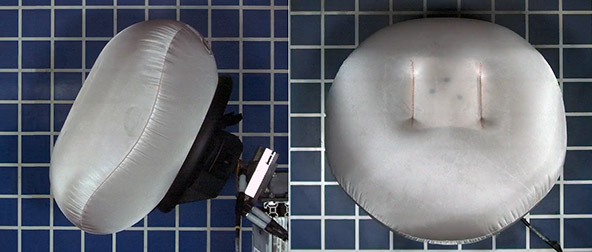
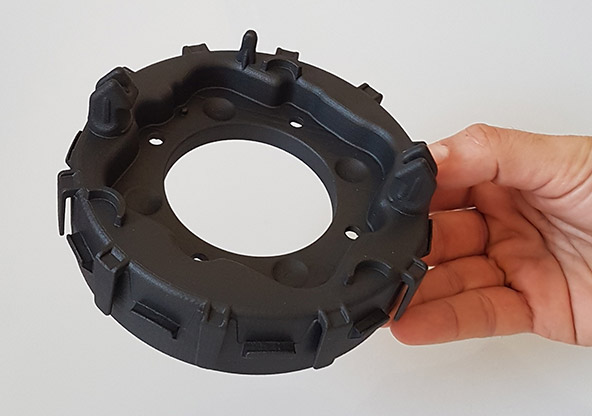
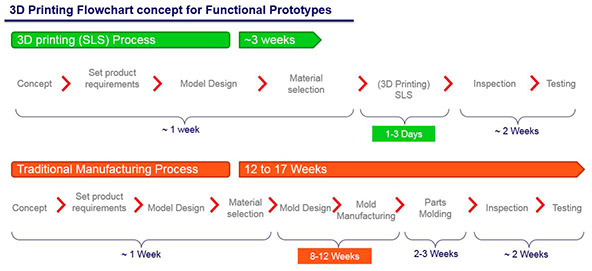

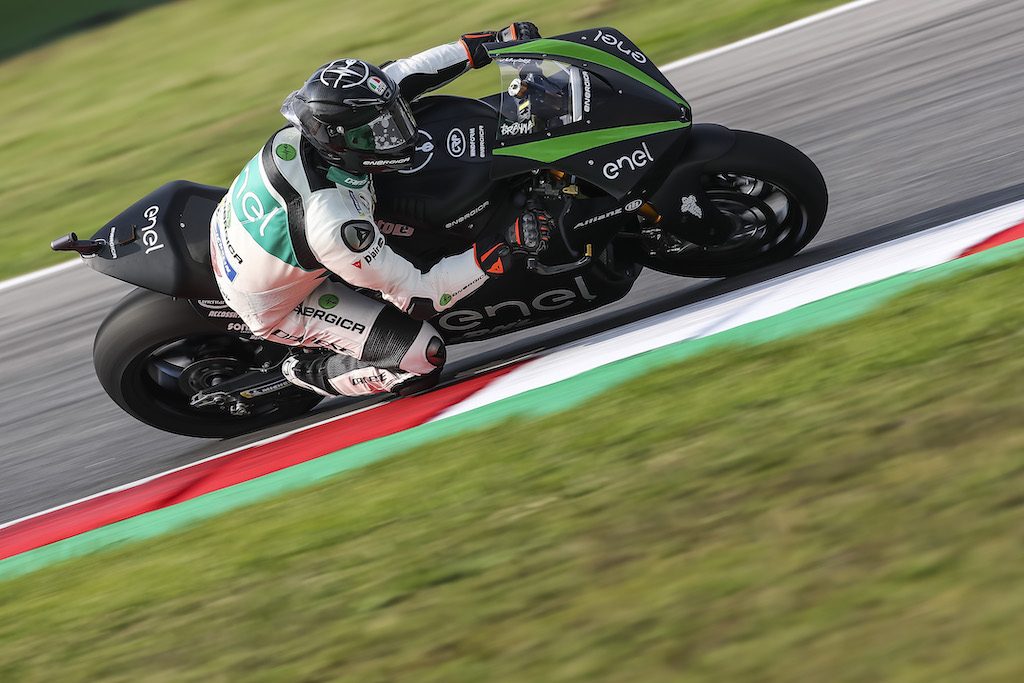
 World Cup, with some 3D printed parts by CRP Technology
World Cup, with some 3D printed parts by CRP Technology
